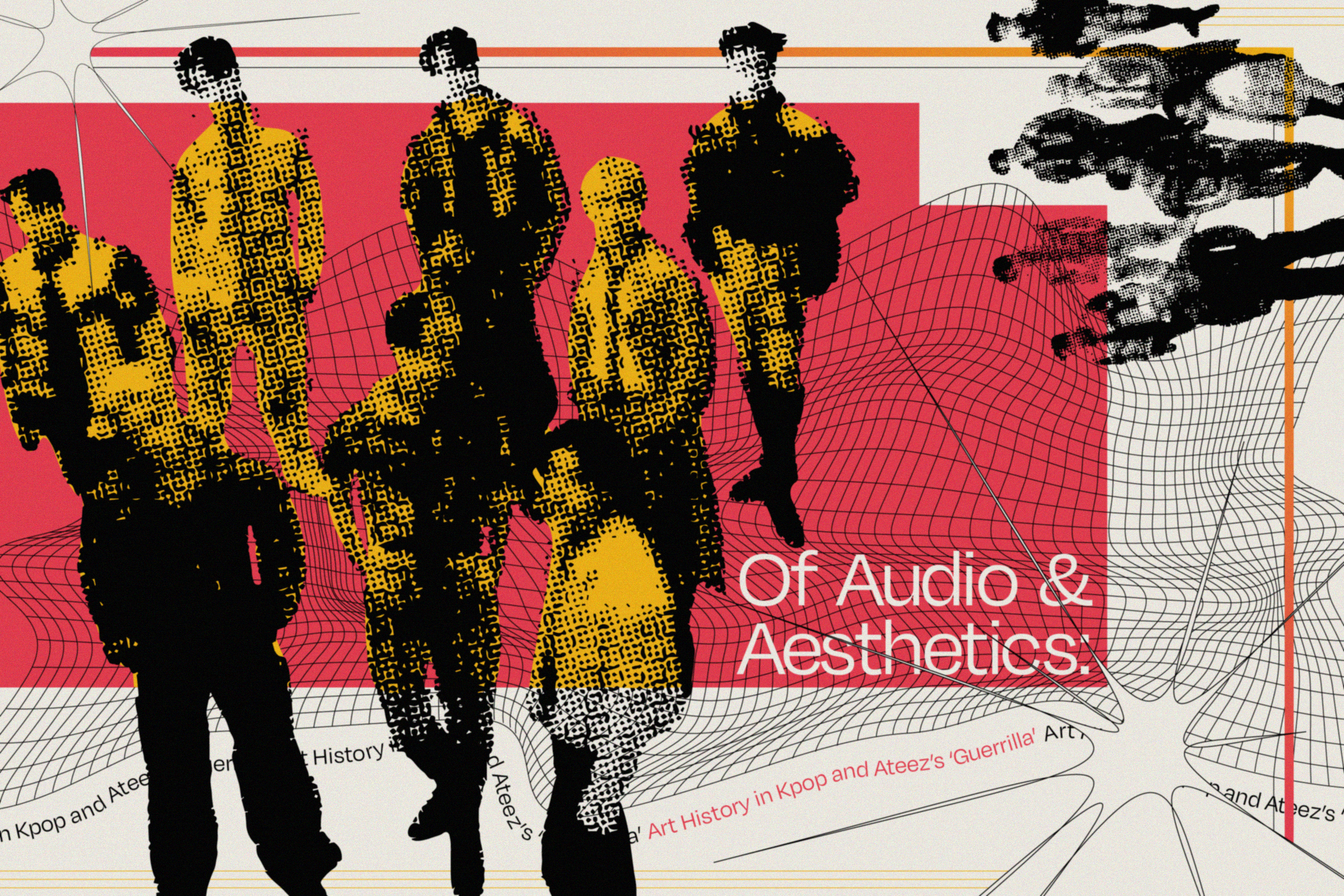There is an underrated truth to how visuals impact the experience of liking a song. I believe K-pop understands this, delicately fretting over every aspect of performance and album to heighten the listening experience. What happens when these visuals draw inspiration from classic motifs and movements?
K-pop and Art History. Like a cheesy romance book with star-crossed lovers, it’s an unlikely match that makes my heart flutter. Whether it’s one masterwork inspiring an entire video (such as Red Velvet’s Feel My Rhythm) or flashes of paintings furthering an already present storyline (like BTS’s Blood, Sweat, and Tears), each time incorporated, it reinvents these classics in a modern way.
This brings me to the newest favorite in my list of K-pop! Art history concepts: Ateez’s Guerrilla.
With 20 credit hours of art history in my repertoire (and five more still needed to graduate, thank you, GRDS at SCAD), it was quite easy to highlight the apparent ties to Constructivist Art in this music video. Still, I think it’s underappreciated how well it’s done. Not only does it pay homage to the movements through a minimally dark color palette and strikingly geometric set design, but it also furthers the movement’s ideals through the lore of the music video.
The Constructivist Movement is a part of the radical avant-garde sub-category, linking artists to the art and the art to the general public. No longer was art only for galleries and the highest paying Patreon. It was sent to the streets with modern life in mind, simply created to support the masses. Art became engineering and was set to revolutionize Russian cultural life. There is a reason this movement is synonymous with the Communist Party and the rise of the Soviet Union. But regardless of politics, it sought a new, modern way to express the dynamism in the industrial world, rejecting the status quo.
This aligns closely with the lyrical intent of the song. Ateez’s management company KQ Entertainment expressed that the meaning is about circumnavigating how society regulates people expressing their emotions. It’s about feeling lost as we race towards an unforeseen future, struggling to find the freedom to express ourselves.
Half of its delivery is performance, and rather than just supporting the auditory elements, they successfully found a way to heighten the overall experience. The instrumental composition, lyrical meaning, and Constructivist aesthetic are all harmonious throughout the concept.
While I’m not the biggest fan of typical industrial-rock sounds (or at least I haven’t been since seventh grade), I really enjoy the slight genre-bent elements of this heavy-pop take on rock music. However, the ties to art history make it stand out to me, truly highlighting all the song’s best features. As my current favorite group, I always look forward to seeing what Ateez comes up with next, and I pray they, as well as others, continue to include historical motifs in their promotions. And if KQ needs any help in sourcing art history-enthusiasts for their next comeback, I am definitely the best GRDS girlie out there for the job.
Words & Graphic by Fai McCurdy.

